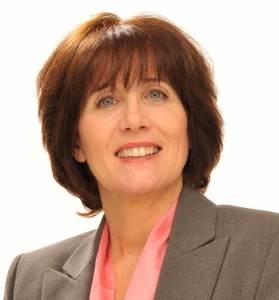
Business Valuation: Document Shredding Businesses

Document shredding truck.
By Tim Greene, Business Broker and Consultant, DeFoor Business Services
Recently I exchanged emails with the owner of a document shredding business. He asked me to explain the logic behind current business valuations for document shredding businesses. I show his questions and my answers below.
Why are business valuations stated as a multiple of revenue?
Most buyers actually calculate a recast EBITDA number when they are considering the acquisition of a document destruction business. EBITDA is an acronym that means Earnings Before Interest, Taxes, Depreciation and Amortization and is a measure of the free cash flow of the business. Buyers multiply the recast EBITDA number by around 4-5 to arrive at a value for your business. So it is easier for the seller to understand, they divide the value they’ve determined by your total revenue. Then they present their offer as a multiple of total revenue. A typical multiple for a document shredding company is 1.5-1.7 times total revenue. The multiple of revenue valuation they present in their offer is based on the conclusion of their EBITDA analysis. It is not the starting point for their offer.
Which assets are included in the sale of the business?
At the valuation multiple mentioned above (1.5-1.7 times), the trucks, containers and any other equipment used to generate your revenue are typically included in the transaction. You’d pay off all truck debt (or remaining lease payments) at closing using your own funds or down payment funds provided by the buyer. The buyer would receive free and clear title to the trucks once closing was complete. Other assets included in the sale are shown below.
Tangible assets
- trucks
- bins and containers
- hard drive shredding equipment
Intangible Assets
- customer lists including contact information
- customer agreements and contracts
- books and records
- goodwill
- website, phone numbers, fax numbers and email addresses
- company name
- seller non-compete agreement
Which assets are excluded from the sale of the business?
Normally at these valuation levels, you’d keep all accounts receivable (AR), accounts payable (AP) and cash in the bank as of the day of closing. The buyer would assume responsibility for those items after closing. Recycled paper inventory is often liquidated by the seller prior to closing and in essence, becomes AR. Every buyer is different, and occasionally they want to retain some level of working capital or current AR. Other assets excluded are shown below.
Tangible Assets
- office furniture and computers (sometimes but not always)
- cash in company accounts as of the day of closing
- accounts receivable as of the day of closing (you keep accounts payable thru closing as well)
- seller owned real estate
Some buyers don’t want to purchase shredding trucks for a variety of reasons (age, make, model). If you agreed to remove the trucks from the transaction and sell them independently of the remaining assets, then the equation changes. Both the purchase price and the 1.5-1.7 times multiple would be lower by the value of the trucks. You wouldn’t need to pay off the truck note balances until you sold them to another buyer.
The value of your real estate is excluded under this valuation method. If a buyer is interested in purchasing your real estate, it would be in addition to the value of the business.
Asset Sales versus Stock Sales
Most buyers prefer asset purchases over stock purchases in small business transactions. In an asset purchase, the buyer isn’t purchasing the stock of your corporation, just the assets of your corporation. As a result, the buyer does not inherit past liabilities such as workers comp issues, lawsuits, warranties, unpaid liabilities, etc. After closing, you’d still own the corporate shell of your business. Asset purchases frequently minimize tax consequences as well.
Summary
Keep in mind, these are the terms under which the business is offered in a memorandum to the buyer. Anything is negotiable as part of the sales process. As a result, the terms of purchase are frequently different than the terms of the offering. Every circumstance is different and “rule of thumb” valuation multiples can’t be applied across the board, as all businesses are unique.
I hope that helps in your understanding of valuation for document shredding businesses and valuation of small businesses in general.
Business Broker and Consultant
Read More
Pratt’s Stats Private Deal Update 4Q 2015
The information provided below is excerpted from the Pratt’s Stats Private Deal Update: 4th Quarter 2015, which is copyrighted by and available exclusively from Business Valuation Resources, LLC. Brokers who contribute transaction details to Pratt’s Stats on closed business sales receive the complete Private Deal Update plus three months of free access to the database for each deal included in Pratt’s Stats.
The quarterly Pratt’s Stats Private Deal Update (PDU) provides general trend information on valuation multiples and profit margins for transactions in the
Pratt’s Stats database, available exclusively through Business Valuation Resources, LLC (BVR) at www.BVMarketData.com
Pratt’s Stats Private Deal Update 4Q 2015
Read MorePratt’s Stats Help for Brokers
Pratt’s Stats, published by Business Valuation Resources, LLC, is a great resource for GABB members.
While GABB no longer get complimentary access to this valuable service, members who submit qualifying sales can get free access from the company. GABB also requires Million Dollar Club members to submit their deals to Pratt’s Stats as a qualifying condition, and we encourage all members to submit their deals to Pratt’s Stats.
Business brokers find Pratt’s Stats a valuable tool. It offers market comparables, shows the Broker’s client the resources the Broker has, which helps clients trust the Broker’s experience, and provides a great gut check as to what businesses really sell for.
For example, when you are looking at a home, do you trust your Realtor with just giving you a number to buy a house? Or do you compare it to other homes in the area to see what the value should be
Some brokers have told us that they find it difficult to submit deals to Pratt’s States. A Pratt’s contact estimated “it would take a max time of 15 minutes for every deal. But for a broker who just finished the deal, is familiar with the deal and the organization of the file, I would say it takes less time.”
Pratt’s is willing to help brokers write up the deal for anyone who wants to submit. So if a broker has files on the computer (PDF, Excel, etc…) the broker can then email the files to Pratt’s and they will write up the deal.”
As of February, 2017, the Pratt’s Stats contact is Mitchell Cameron, Senior Financial Analyst at Business Valuation Resources, LLC.
Read More
Georgia Business Brokers Discuss Working With Buyers and Sellers
The collective wisdom of four brokers with 75 years experience was on stage Tuesday, June 30, as the Georgia Association of Business Brokers hosted a panel discussion on how to move buyers and sellers to the closing table.
Moderated by GABB Vice President Mike Ramatowski, the panel featured GABB Treasurer Jay Fenello, who specializes in helping people buy and sell small businesses and franchise resales; Kathryne Pusch, whose firm represents a wide spectrum of buyers and sellers; and J. Snypp, who works with both buyers and sellers of small to medium sized businesses in many different industries.
Listening, a lot of listening, to buyers and sellers, is a key aspect of how Pusch operates. “Each person we see has a different set of needs,” she said. “Each buyer and seller has different motivations, and so we’ve got to make that work. So in that sense we are problem solvers right.”
Be sure the buyer is prequalified for an SBA loan, and do due diligence, Pusch recommends. “You get financial statements, get a resume, get a bio. You look at that, and you say, ‘Can we fund this deal?’ So then we know that we have something that actually can work.”
“It’s great to have somebody who says I want to buy, but can that person actually buy the business?” Pusch asked. “Is there a way to make the deal work with the resources that they have with the experience that they have? For me getting prospective buyers and sellers together involves making sure I’ve got a true meeting of the minds.”
Pusch said brokers must avoid just displaying their knowledge while “trying to force people to do what we want,” and instead “we need to be listening to them to make sure we understand where they’re really coming from because I don’t believe there’s any real hostile takeovers in small business. You have to make it work, and they both have to really want it to work, and they both have to really feel like they’re winning.”
“The number one enemy we have in our in our business it’s the fear.” Money and time are also critical factors, “But for most people they will not do something if they can’t get over the fear hurdle, and they can’t do it if they can’t get over the financial hurdle.”
If brokers can help prospective buyers and sellers overcome anxieties about having a binding contract, they “can start to move that to the next stage we’re going to talk about next month, due diligence and getting that thing closed. which we all know takes lots of time and lots of tension,” Pusch said.
Snypp says his current deals range from $150,000 to $3.5 million, and said he asks for an upfront engagement fee from buyers and sellers.
“In the past, I’ve worked for months and months with a buyer who ended up not buying a business at all, going back in the corporate world, and I figured my time’s worth something. So we’re charging a fee up front to work with those people.” This policy avoids those clients who “will let you work and get offers just for their ego,” or “to find out what their business is worth to sell it to their cousin.”
The up-front money, refunded when a deal is closed, insures that both sides are committed, Snypp said.
In some deals, a buyer and seller are just really on top of things, Snypp said, “and they’re driving the deal more than I am because they are focused and they know what they want.” Snypp enjoys those deals because a broker can sit back and just provide guidance on potential missteps.
Snypp said he enjoys working with GABB affiliate lending institutions who will give him an honest answer about the viability of a deal. “I would much rather have a backer saying, ‘no this was not right for us,’ right up front and then we can find alternative lending or make some kind of changes within the deal structures.”
GABB attorneys have been essential in certain complicated deals, such as those involving stock transactions, Snypp said.
Efficiency is the key to Fenello’s specialty: main street clients, for which he gets a lot of referrals from GABB colleagues.
“I find that doing a transaction is a lot like a dance,” Fenello said. “You start out with two parties who don’t know each other, and you have to tell us what your finances look like before we’re going to show you the tax returns. You have to show us that you can financially do this deal before we let you talk to our accountant. So if you have a very definitive back and forth, everything gets done and everybody’s comfortable.”
Communication is also key, Fenello said. “The number one complaint I hear about business brokers in the low end of the market is ‘I haven’t heard from my broker in six months. I don’t know what’s going on out there. I don’t think he’s doing anything.’ “
To combat, Fenello sends a weekly report to every client describing what is happening in their market. “In order to do that, you have to be very automated. So I use a lot of automation to make my life easy.”
Ramatowski says when deals are active, he makes it a policy to contact clients once every 96 hours. Psychologically, the client should be contacted every 70-96 hours to allay anxieties about the approaching deal, he said.
Michael J. Ramatowski, CBI, has been a business broker for 26 years. Mike has served on the board of directors of eleven different organizations with diverse specialties including real estate brokerage, mortgage companies, title insurance, banking, health care, and office supply operations. He serves on three boards of directors where he provides marketing and organizational growth expertise. He has earned the Certified Business Intermediary professional designation by the International Business Brokers Association.
Fenello is principal and founder of BizPlacements.com, a full-service business brokerage firm that specializes in helping people buy, sell and improve small businesses and start-ups, especially owner-operated businesses and franchises. Jay, who is also associated with Keller Williams Realty, began his career in business brokerage in 1995 and has since worked for several brokerage firms, including one of the largest M&A firms in the country. Mr. Fenello began his career as a computer engineer for IBM in Boca Raton, Fla., where he worked on a new product called the IBM PC. After successfully designing a PC card and its supporting software, he left IBM for a small start-up called Core International. Mr. Fenello formed a company he called Iperdome, Inc in 1997, an internet venture that has turned into a world-wide process to establish internet governance. He has an engineering degree from the University of Florida, and an MBA in Entrepreneurship from the University of Arizona. Mr. Fenello is a member of the Atlanta Commercial Board of Realtors.
Snypp spent more than two decades in the office- furniture business before becoming a business broker and has been with Preferred Business Brokers, Inc. for nine years. He has found success selling businesses in a variety of industries, most recently selling day-care centers, a travel agency, and a cooking school. He has 25 years of sales, sales management, and marketing experience. He often works with buyers to represent them and find them deals. He has been in the GABB’s Multi-Million Dollar Club twice, and the Million Dollar Club twice. He helps business owners with their exit plans by finding qualified buyers for their businesses while maximizing their proceeds.
Kathryne Pusch, President of ConsultKAP, is a seasoned professional consultant and broker who began her career consulting for a large international consulting firm in 1979. Since then, she has worked successfully within the framework of large corporations, and small enterprise, across a broad range of industries, private and public sector. For nearly 25 years, her firm has focused primarily on preparing businesses for a successful sale, exit and transition planning for owners, and assisting disputing partners or shareholders in reaching their differing transition goals.
For more information about the GABB, contact GABB President Greg DeFoor at 678-644-983 or gdefoor@defoorservices.com.
Read More

How Does Your Business Compare?
When considering the value of your company, there are basic value drivers. While it is difficult to place a specific value on them, one can take a look and make a “ballpark” judgment on each. How does your company look?
| Value Driver | Low | Medium | High |
|---|---|---|---|
| Business Type | Little Demand | Some Demand | High Demand |
| Business Growth | Low | Steady | High & Steady |
| Market Share | Small | Steady Growth | Large & Growing |
| Profits | Unsteady | Consistent | Good & Steady |
| Management | Under Staffed | Okay | Above Average |
| Financials | Compiled | Reviewed | Audited |
| Customer Base | Not Steady | Fairly Steady | Wide & Growing |
| Litigation | Some | Occasionally | None in Years |
| Sales | No Growth | Some Growth | Good Growth |
| Industry Trend | Okay | Some Growth | Good Growth |
The possible value drivers are almost endless, but a close look at the ones above should give you some idea of where your business stands. Don’t just compare against businesses in general, but specifically consider the competition.
As part of your overall exit strategy, what can you do to improve your company?
© Copyright 2015 Business Brokerage Press, Inc.
Photo Credit: kconnors via morgueFile
Read More


